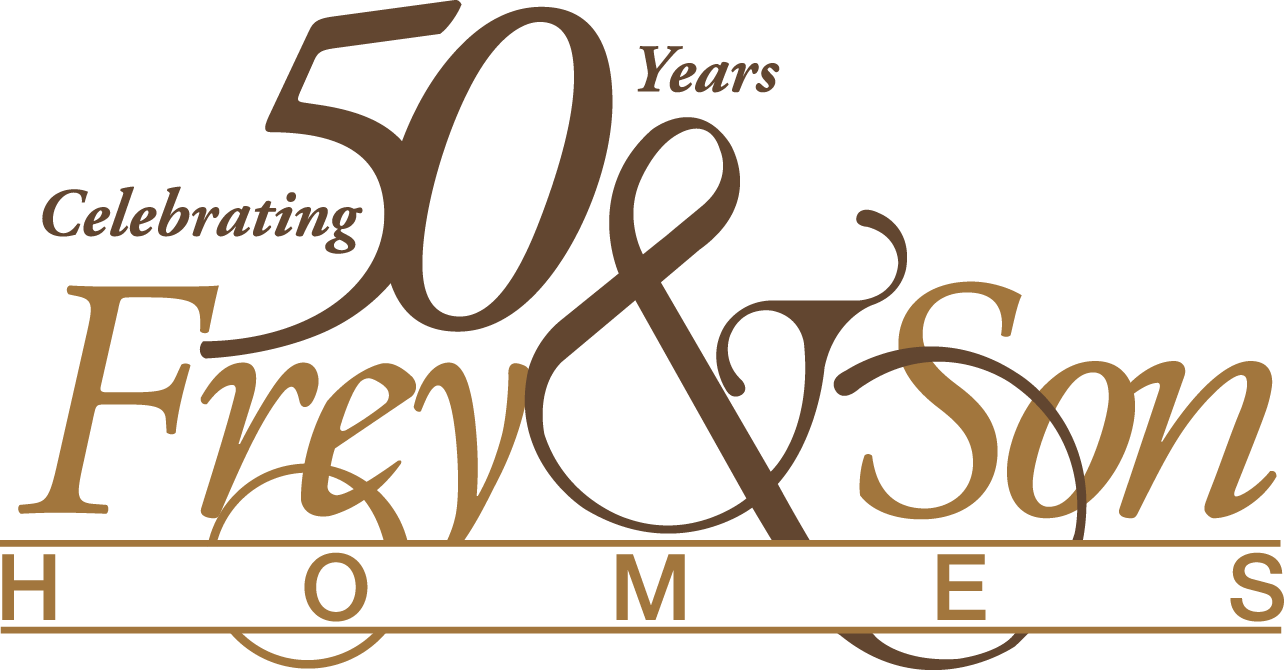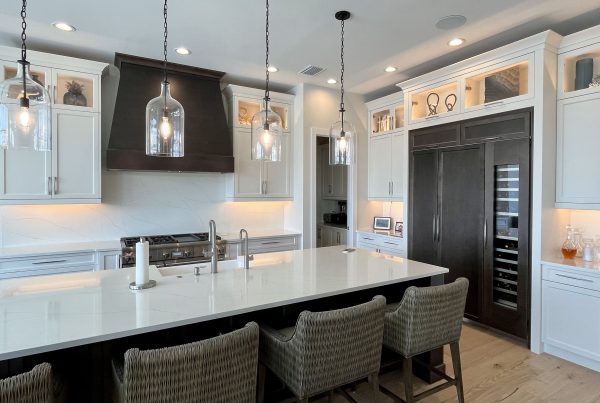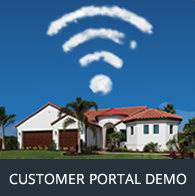Perhaps the most frequently asked question in any business these days is “How much will all of this cost me?” Often in the home-building business, we are asked to reduce our pricing to a per square foot factor, as if one were buying apples or oranges. Evaluating the cost of a home based on price per square foot of living area can be very misleading. Ceiling heights, garage space, lanais, decks and pools, to say nothing of architectural detailing certainly effect the overall price, and often quite substantially. The specifications of materials, fixtures and accessory items quoted also tremendously effect the cost of one plan versus another. A builder’s price can only accurately be evaluated once many factors have been determined and accounted for.
At Frey & Son Homes we emphasize that a fair price will, in actuality, be determined by you, the customer. You and he will work together to determine the exact design and related details. We employ Interior Design Professionals that work with our clients to select and specify all finish materials and fixtures to be installed in your home. A select group of top rate craftsmen-subcontractors are available to our clients to consult on special requirements or wants such as air conditioning, lighting, landscaping, pool heaters and the like. Our experienced staff, working in conjunction with outside experts such as engineers, surveyors and excavation specialists will determine any site condition related expenses. Clearing, fill dirt, additional stemwall, steps, landings etc., account for perhaps the greatest variance in home building costs from one location to the next. Not until most of these factors have been determined, can we apply a fair profit margin to costs and quote a price for your home. The important benefit of our system is that our clients know prior to entering into a written building agreement, a prerequisite to the starting of construction, the overall total price they will pay for their new home. We refer to this as the Firm Price Method of pricing (FPM).
As the home building process in the opulent home market has gotten more complex with the introduction of a variety of different and more elegant materials and finishes such as marbles, granite, Corian, luxury plumbing fixtures, sophisticated lighting systems, etc., a different approach to pricing has evolved with some builders. It is often referred to as the Cost Plus Method of pricing (CPM). With CPM the buyer and the builder negotiate a certain percentage for overhead and profit to be applied to the total costs to arrive at the price for the home.
The obvious difference between the two approaches is, the FPM provides the customer with a firm number to build a given house with a pre-agreed upon set of specifications and appurtenances at a given price. The CPM approach leaves things, for the most part, open-ended, avoiding one of the most important questions to the prospective new home owner – “How much will our home actually cost?” Why would anyone want to expose themselves to the risk of the Cost Plus Pricing approach?
From the builder’s standpoint, the CPM approach is very favorable. He is assured from the beginning of a given profit, which can only increase. Moreover, it is easier for the CPM builder to give a price, which is a guesstimate, on a cost plus basis than it is to sift through a myriad of costs and give a firm price. For the small builder, an error in a fixed price proposal can mean disaster. Whereas, an error in a cost plus proposal will be paid for by the customer.
Some prospects choose the CPM since they “know precisely” what the builder is making, and can control his level of profit and overhead and therefore be assured they are receiving a fair value for the money. This is not at all the case. Here are some of the reasons.
The clearest argument against the Cost Plus arrangement is that the customer has no control over the final cost. The direct building costs quoted are only an estimate, and thus are subject to increases without discretion, with the added insult of “…Plus;” the builder’s overhead and profit. In the FPM method, the price the builder quotes as a firm price, is firm, regardless of increases in his cost of doing the job.
One way that is used to attempt to protect against this “upside creep” is to use a “not to exceed” figure. But does this really provide adequate protection? What the CPM builder may do is artificially inflate the original estimate to allow room for slippage. This covers a variety of “sins” for the builder, including his “seat of the pants” original estimate. In CPM building, who pays for errors in the plans and specifications? Who pays when the builder mis-orders material? Who pays when materials are stolen from the job site? Who pays when a subcontractor is replaced or fails to do quality work? Who pays when a subcontractor goes out of business or files for bankruptcy, leaving everyone else holding the bag. These circumstances are common today. When they happen, often times without the customer’s knowledge, the customer pays more, yet the CPM builder profits more with the addition of profit and overhead. Artificially inflated estimates allow room for this kind of slippage. Whereas with the FPM, the price quoted, regardless of the unforeseen actions is what the builder is paid.
Even an upset figure may not prevent costs from escalating above the upset number. Usually upsets permit increases for change orders. Typically when the customer embarks on the building process, new ideas surface which have not been included, requiring change orders. Consequently when changes are made, such as revisions in the plumbing schedule, new cabinet selections, revised marble selections or, perhaps when there are floor plan revisions or blueprint errors, it is the customer who suffers. In these cases the CPM builder is allowed to increase the upset figure, off times completely at his discretion.
The FPM builder has an incentive to control costs. Any costs that exceed the builder’s original budget come directly out of his profit and overhead since the customer knows from day one what his cost will be. The cost plus builder has absolutely no incentive to control costs; rather it can be argued that he has an incentive for increased costs.
In construction there are a variety of areas in which builders can drastically influence the cost of a home. First and foremost for the FPM builder controlling costs from suppliers is very important. Larger volume builders generally will spend a significant amount of effort negotiating lumber, concrete, drywall, fill, etc. unit prices. The market for these products fluctuates dramatically. Typically suppliers are aggressively shopped on a monthly basis. Larger volume builders not only benefit from a greater buying power but also have more people and resources devoted to monitoring prices as prices paid for materials directly benefit their bottom line. This builder typically gets close to bare bones wholesale prices. The small volume CPM builder does not have the time and will use the supplier that provides the best service. He typically gets very close to retail pricing. In many cases, this will result in this builder paying 5 to 25% higher prices for each item that is purchased.
Another area FPM builders continually work to keep at a minimum is waste in materials. Every builder is repulsed by the careless waste of materials by uncaring workmen, and materials damaged by the weather. The FPM builder has something to gain by keeping waste down, whereas his CPM counterpart benefits from higher materials costs. Cost conscious builders have to fight against waste on a daily basis.
A more costly form of waste often occurs when the builder makes a mistake in the field, such as when a superintendent lays out a wall incorrectly that must be torn down, or over orders material that cannot be returned, or incorrectly schedules a job resulting in subcontractor back charges. The FPM builder pays directly for these mistakes, whereas the CPM builder passes them on to the unwary customer.
Another area in which cost conscious builders aggressively control costs is in their negotiations with subcontractors. Most higher volume builders employ the services of a few different subcontractors in each trade category such as plumbers, electricians, carpenters, masons, etc. In most trades each subcontractor must competitively bid with other subs of comparable quality. In some trades a “captive” group of subs is employed at negotiated unit prices where that subcontractor is crucial to quality control and scheduling. FPM builders aggressively bid and negotiate these prices to assure value.
The CPM builder has little incentive to control costs. His incentive is to minimize headaches and maximize cost and thus profit. Sometimes cost plus contracts will require the builder to get three competitive bids. To get three very high bids is not a difficult task. Most builders know who the expensive subs are. In order to protect a comfortable relationship a cost plus builder may call three expensive subs so as to legitimize a favored bidder.
In addition to negotiating competitive prices “up front”, most successful builders will work to insure that plans, specifications and other bid documents are clear and consistent. Some subcontractors are notorious for getting a job and padding it when there are changes, plan discrepancies or mistakes. A FPM builder often times has to aggressively negotiate extras that dribble in.
Cost plus builders develop a very cozy relationship with one particular group of suppliers, vendors and subcontractors. Usually their price is higher but service minimizes headaches to the builder. The thing that is often amazing is how inexpensive these vendors become when the cost plus builder decides to build a model, spec or his own home. Its called – “calling in one’s markers” and it goes on behind everyone’s back.
It is only human nature for the cost plus builder to select the subcontractor that minimizes his headaches. Very often the cost plus builder feel he can get away with less supervision with the cozy relationship. But the long run effect may result in a lower quality product. There are a multitude of evils which drywall and a well done paint job can mask from a customer. It is imperative to have trained superintendents carefully supervising all subcontractors. Subs that are trusted to do a good job invariably will take short cuts. It is the judgment of Frey & Son that the firm price builder more carefully guards against these occurrences as his jobs are typically more carefully managed and supervised.
In the final analysis, a customer receives a greater level of certainty, value, quality and peace of mind in dealing with a FPM builder, since he must keep costs as contracted. Whereas the CPM builder has an incentive to increase costs, so as to increase his profit. The building business involves a great number of pitfalls especially for those not in the business or located out of the area while the process occurs. Working with a FPM builder with an established reputation, in the long run, will give the buyer what he is looking for, a quality product at a fair, firm price and best addresses the question “How much will our home cost?”
In summary, the CPM appears to be designed to save the customer money, but in fact, it is designed to protect the unstable builder from loss, and to encourage higher cost. The FPM, on the other hand guarantees the customer a known, firm and fair price, while giving the builder an incentive to be more efficient and more cost conscious.







